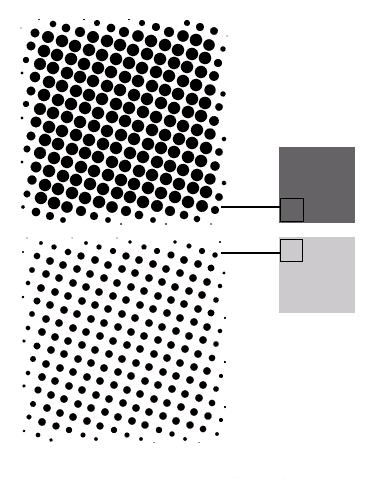|
Neolith Graphics |
Understanding ResolutionResolutionOne of the most confusing aspects of desktop publishing and printing is resolution and the measurement of resolution. On our Web site, to minimize confusion for those new at this, we have consistently used PPI to refer to resolution, regardless of the image location or source. You may see other measurement acronyms (DPI, LPI and SPI) and wonder how they correlate. To clarify the terminology, here are definitions and explanations for each term. PPIPPI (pixels per inch) is how a monitor displays an image. How the image looks on the screen is determined by the resolution of the monitor (the number of pixels the monitor can display in a given area). therefore the PPI is the display resolution, not the image resolution. DPIDPI (dots per inch) is probably the most familiar and most misused measure of resolution. It is not the resolution of scanned images, and it is not the measure of images on your monitor. DPI is the measure of how many dots of ink or toner a printer can place within an inch. Most printers print the same number of dots horizontally and vertically. Basically a 600 dpi printer prints 600 tiny dots horizontally across one inch, and 600 tiny dots vertically up one inch. SPISPI (samples per inch) is a measurement of image resolution when doing a scan, or using an image from a CD or digital camera. Some scanning manufacturers use DPI in place of SPI in listing their scanners resolution capabilities. this is misleading because there are no dots in the image until it is actually printed. When you’re scanning photographic images, you need to keep in mind your final printing or output method. If you scan at too low a resolution and you find need to blow up your image in the software program you are using, you will end up with a lower quality image. On the other hand, using too much resolution results in wasted information and unnecessarily large file sizes. LPILPI (lines per inch) is an important measurement related to the way most printers produce product. LPI is a standard offset printing term, and is dependent on the output device and the type of paper used for printing. To simulate shades of gray using only black ink, a printer prints varying sizes and patterns of halftone spots (spots are made up of many dots of ink). Small halftone spots (fewer dots) create the visual illusion of a lighter gray while larger halftone spots (more dots) appear darker, and blacker.|the printer uses a halftone screen divided into cells. the cells contain the halftone spots. How close together the cells are in the grid is called lines per inch. this is the LPI, or line screen.  Halftone Dots Representing Different Levels of Gray When printing in CMYK, the printer uses a different screen angle for each of the four colors. these separated colors are often called plates. Each plate prints at a different screen angle, and once all the plates are printed at different angles, the ink mixes together to create a seamless, smooth full-color image. the lower the LPI, the more obvious the halftone dots appear in the printed piece. Most laser printers (300 to 600 dpi) can only manage to print an LPI of 50 to 65 LPI, resulting in coarser image reproduction. High-resolution image-setters print at an LPI of 150 resulting in much smoother images comparable to photographs. As a reference, these image-setters print with a DPI of 3600!  cells of Dots Used to Print in CMYK |
| Large Format 4 Color Printing |
| Site Menu Design Studio Web Development Clothing Promotional Signage 1-2 Color Printing |
Home Welcome Contact Us Terms of Service Site Map
Copyright©2012 Neolith Graphics, All Rights Reserved. Site produced by Neolith Graphics • P.O. Box 3844, San Diego, CA 92163